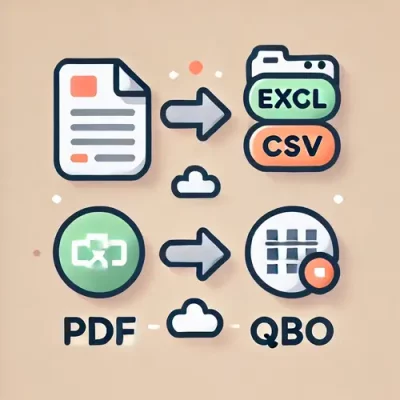RBC allows you to download transactions as CSV, but only for the past 90 to 180 days. Beyond this window, you’re left with PDF statements, requiring you to manually enter each transaction.
This means you need to manually enter the transactions into a spreadsheet or your accounting software, which can take hours or even days, potentially leading to many errors and requiring even more time to clean up.
Fortunately, a scalable solution makes it easier for you to apply to your accounting practice
In this article, we’ll walk through the simple steps to convert RBC bank statement to Excel and explore how a bank statement converter can save time, enhance accuracy, and improve efficiency for your accounting needs.
Step 1: Upload the RBC Bank Statement to DocuClipper
Start by logging into your DocuClipper account if you do not have an account yet, you can try and sign up for a free trial. Once logged in, go to the “Convert” section dedicated to bank and credit card statements.
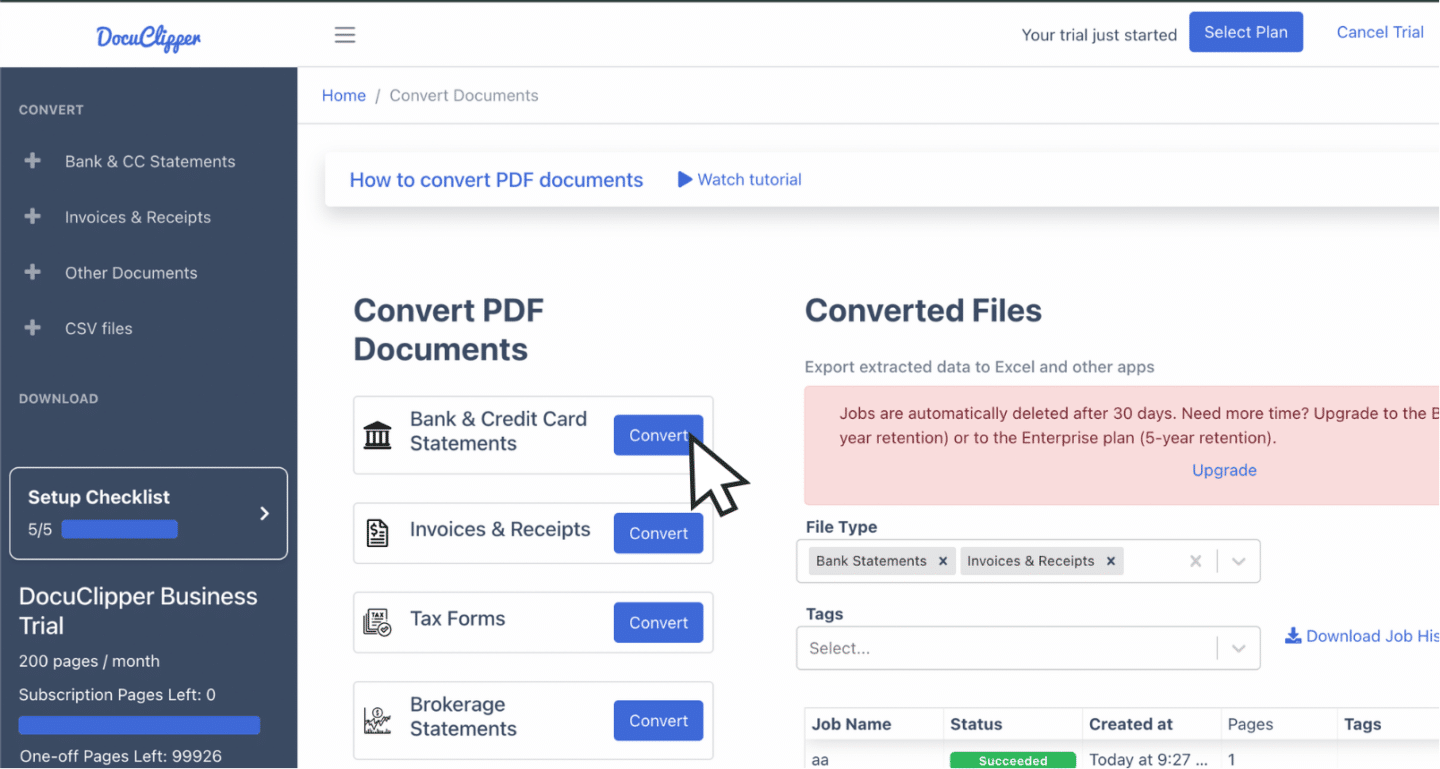
Here, you can upload your RBC PDF statements quickly by dragging and dropping files, with the option to upload multiple files at once. You can label files with tags or custom names.
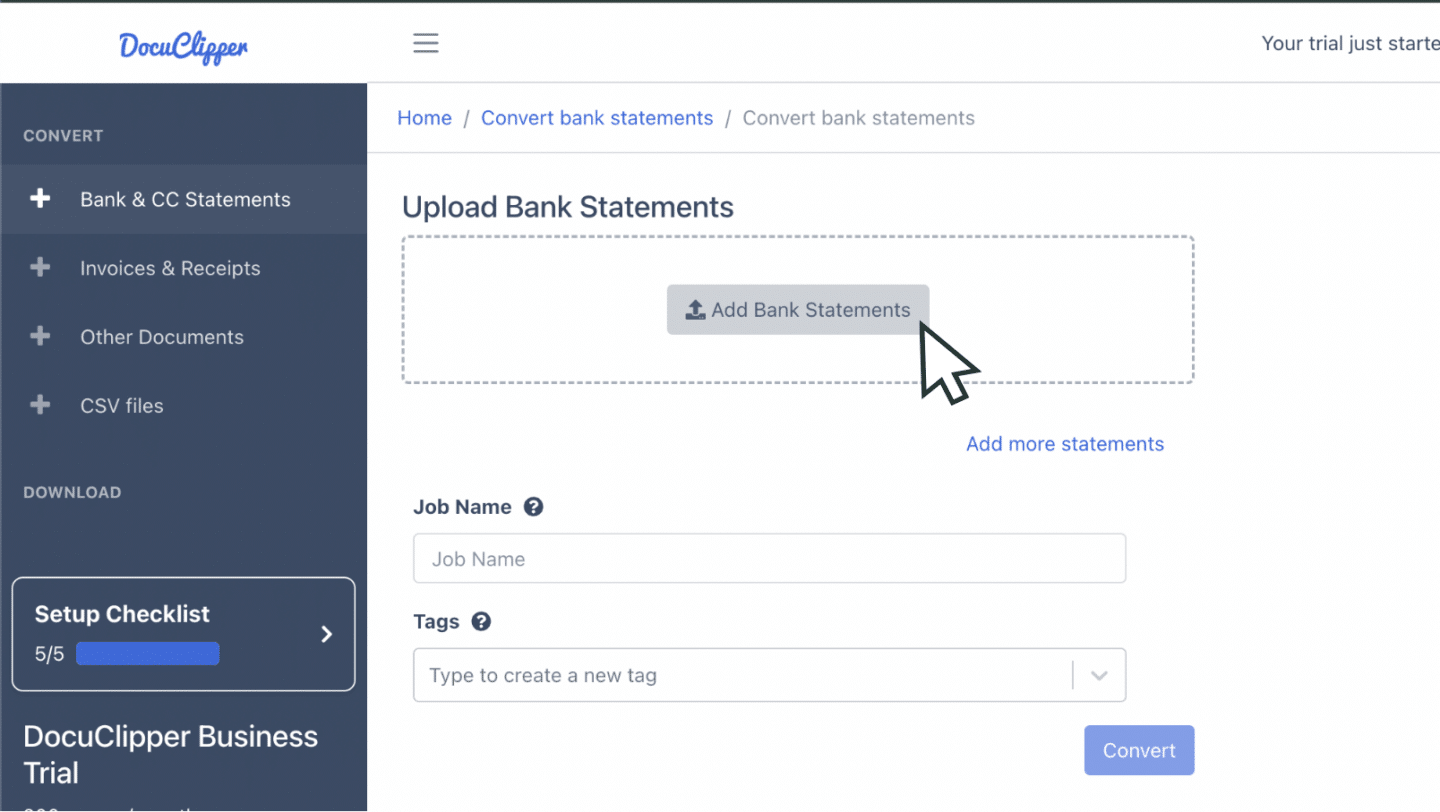
Alternatively, email your statements directly to a unique email address found in your account settings.
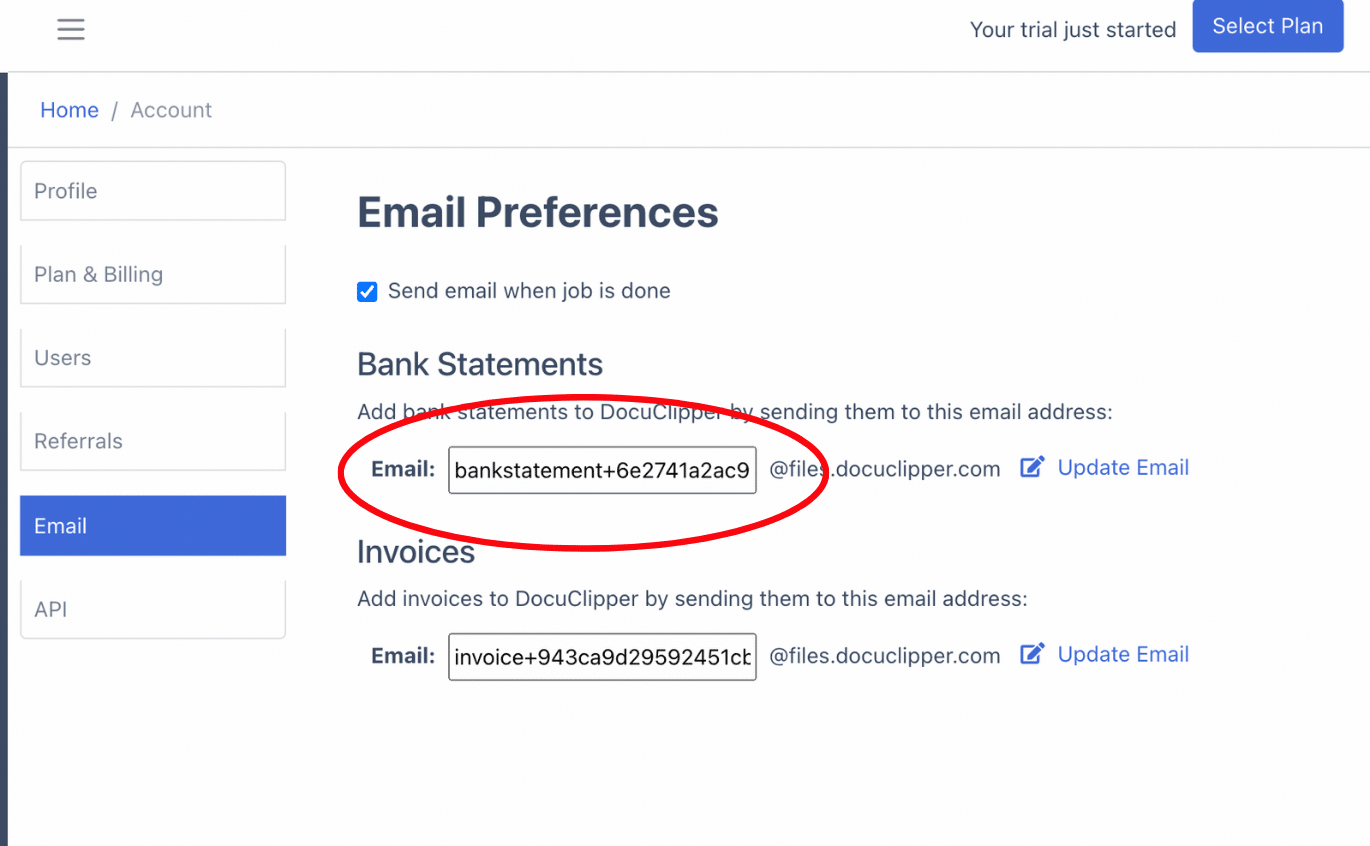
After uploading, you’ll find your files under “Converted Files” on the left menu, ready for converting bank statements to Excel.
Step 2: Analyze RBC Bank Statement
Once uploaded, DocuClipper displays a side-by-side view of your original statement and the extracted data in a spreadsheet format, complete with a dashboard for easy navigation.
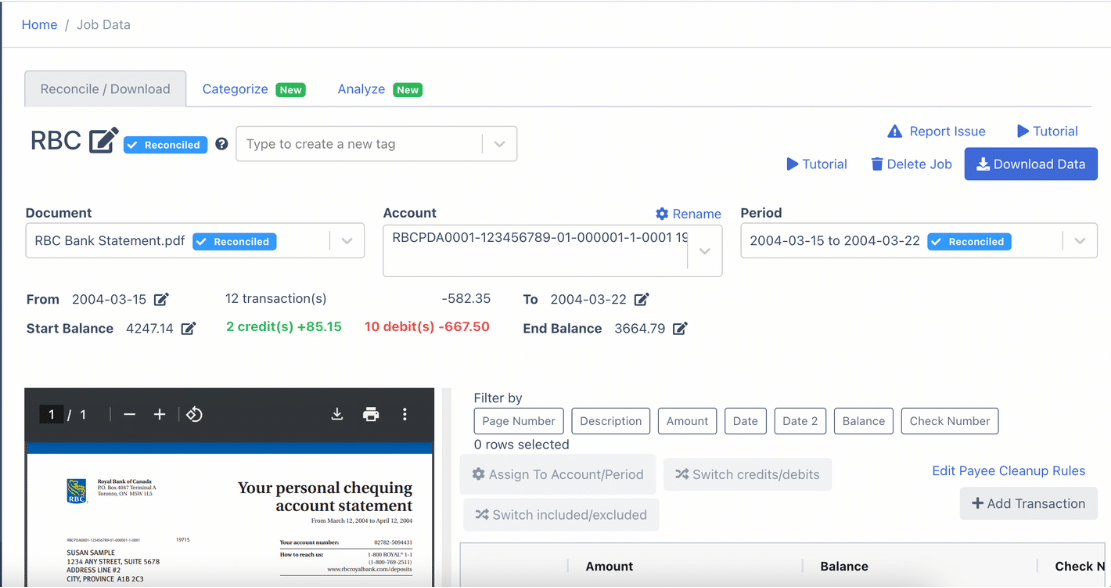
This setup allows you to examine each bank transaction closely, identifying any discrepancies in amounts, dates, or totals that may be due to bank errors.
If you’re working with scanned paper statements, pay extra attention to spot potential scanning errors, as these can affect data accuracy.
Step 3: Reconcile RBC Bank Statements.
After you’ve reviewed the data, DocuClipper automatically reconcile your RBC bank statement. If there are discrepancies, the reconciliation status of the bank statement will indicate it’s incomplete.
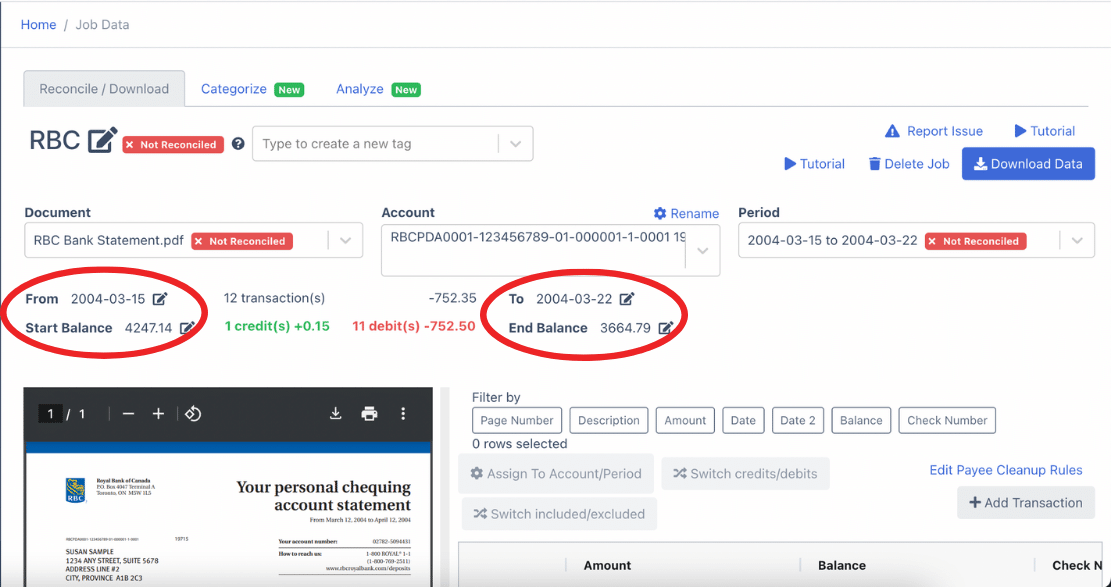
To resolve issues, you can modify transaction details—such as amounts, dates, or descriptions—by selecting the arrow next to each entry.

If additional transactions are necessary, click “Add Transaction,” fill in the details, and verify that all credits and debits are accurately categorized. Once all adjustments are complete, your RBC statement will be fully reconciled and ready for export.
Step 4 Export RBC Bank Statement to Excel, CSV, QBO
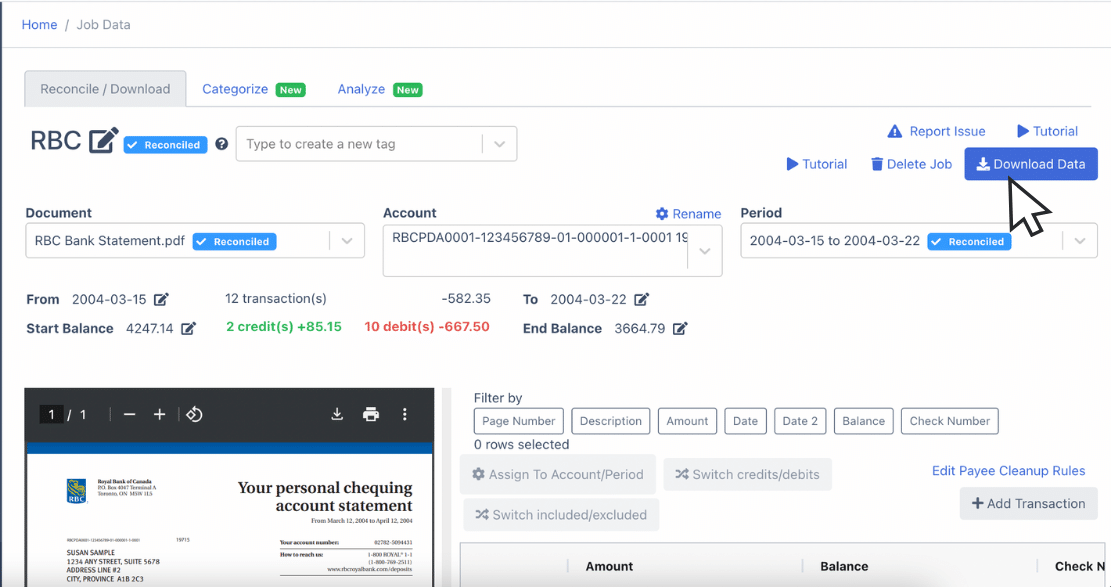
With your RBC bank statement fully reconciled, you’re ready to export it to Excel, CSV, or QBO formats. Click “Download” to initiate the export and select the format you want.
Export RBC Bank Statement to Excel
To export your RBC statement as an Excel file, navigate to the export menu and choose “Excel.” Select the “XLSX” format to ensure compatibility with most spreadsheet software.
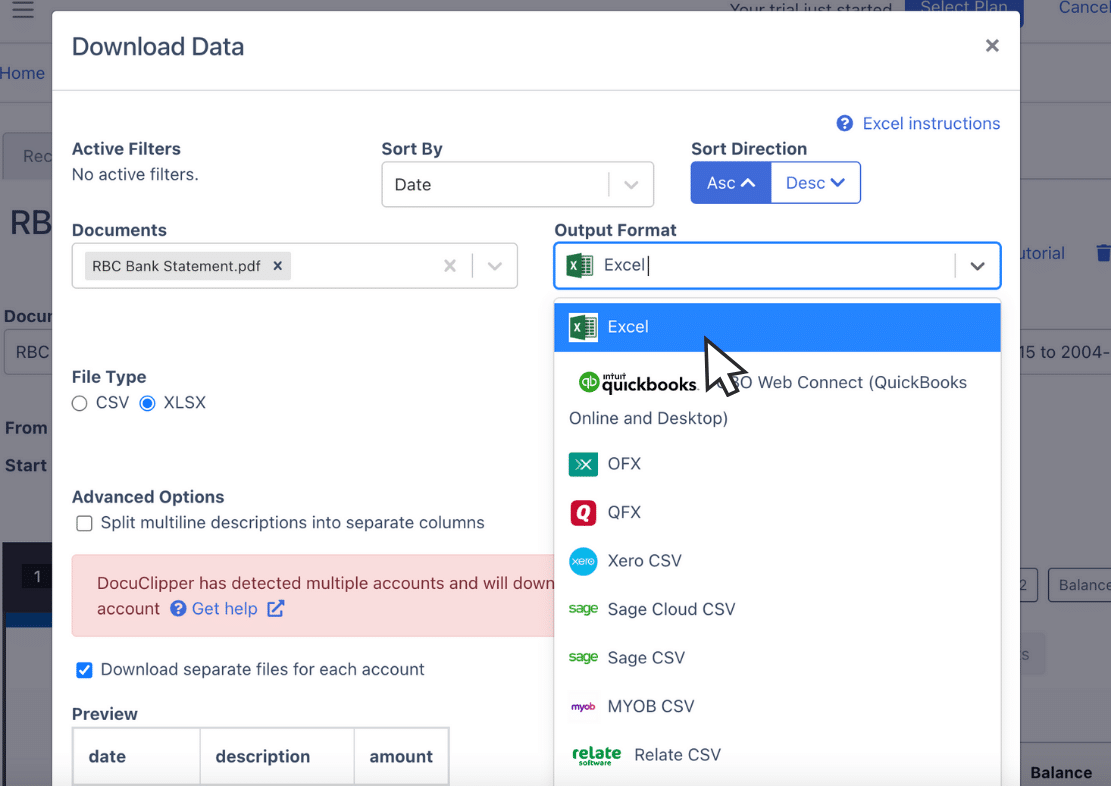
After selecting, click “Download,” and the file will be saved to your Downloads folder, ready for immediate use in your accounting tasks.
Export RBC Bank Statement to CSV
For compatibility with popular accounting platforms, you may need to export statements in CSV format.
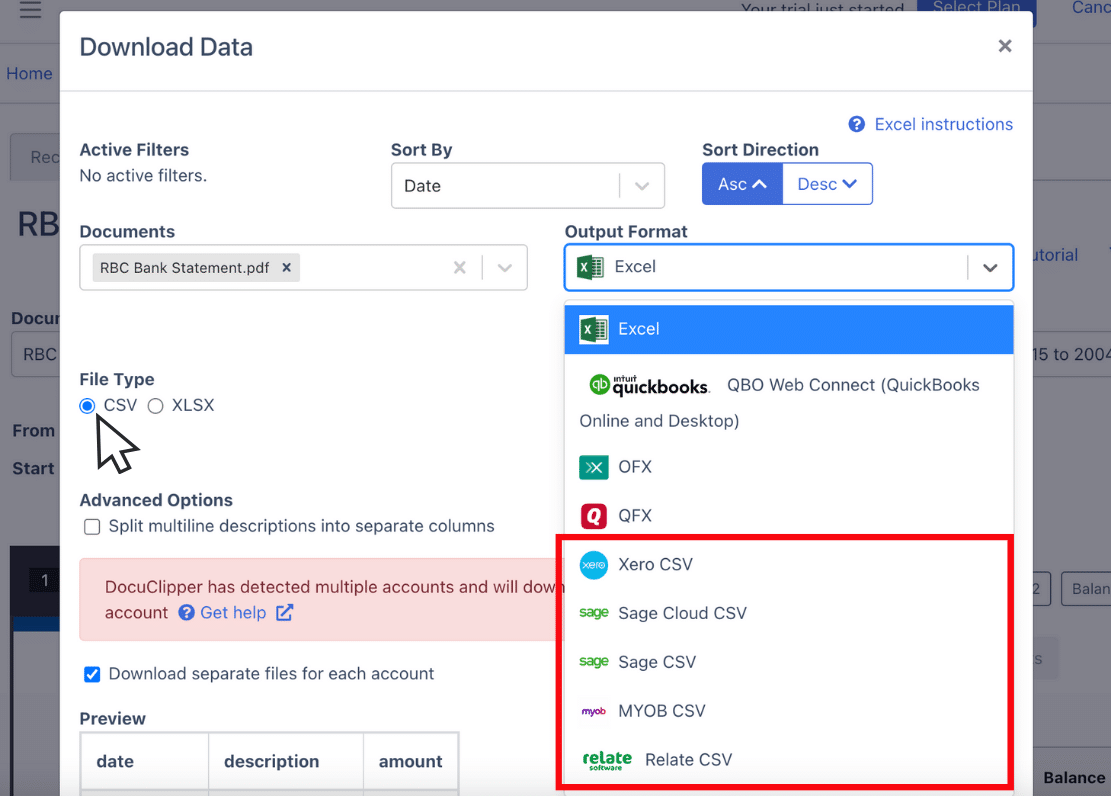
To do this, open the export menu, select “Excel,” and choose “CSV” from the dropdown options.
DocuClipper provides ready-made formats optimized for specific software like Quicken, Xero, Sage, MYOB, Relate, and NetSuite.
Export RBC Bank Statement to QBO
For QuickBooks users, exporting your RBC statement in QBO format allows for straightforward import into the software.
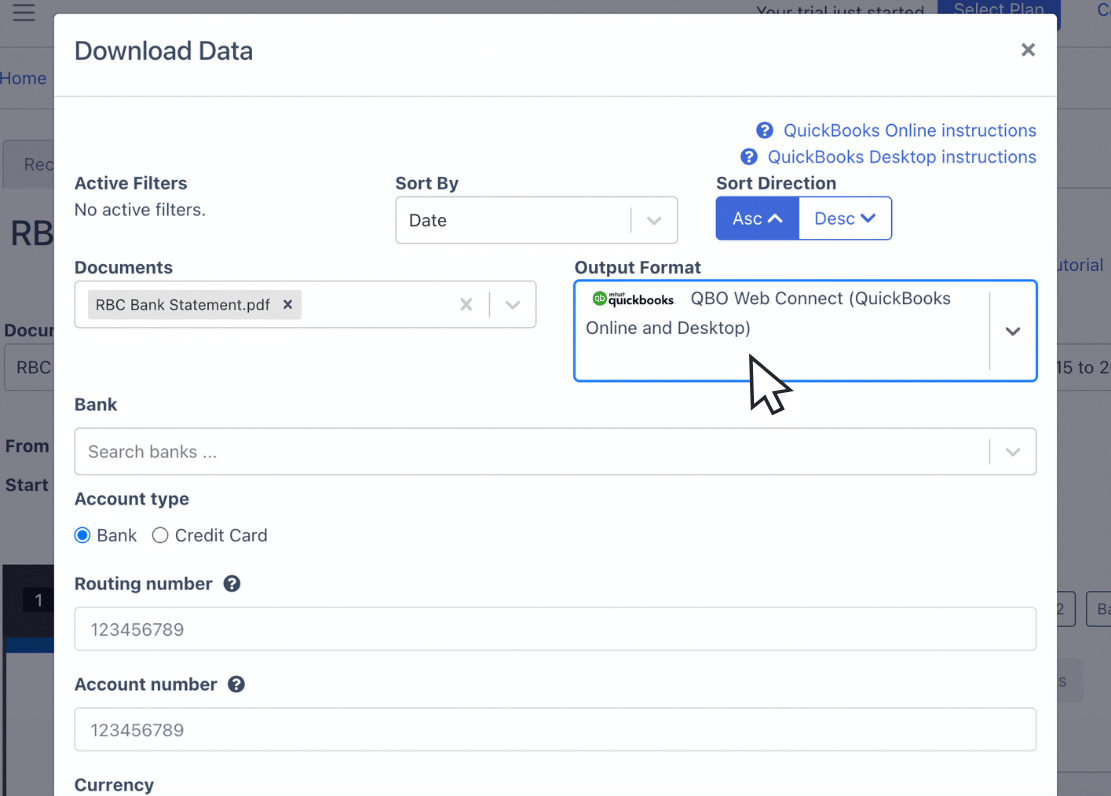
To proceed, open the export menu, select the QBO option, and fill in any necessary fields, such as bank account numbers, names, and classifications.
After configuration, click “Download” to save the file, making it ready for easy import into QuickBooks for efficient accounting management.
Step 5: Configure the Output Format
Before downloading your data, check the spreadsheet’s output format to ensure it meets your specific requirements. Adjust settings like date formats or column order to match your preferences.
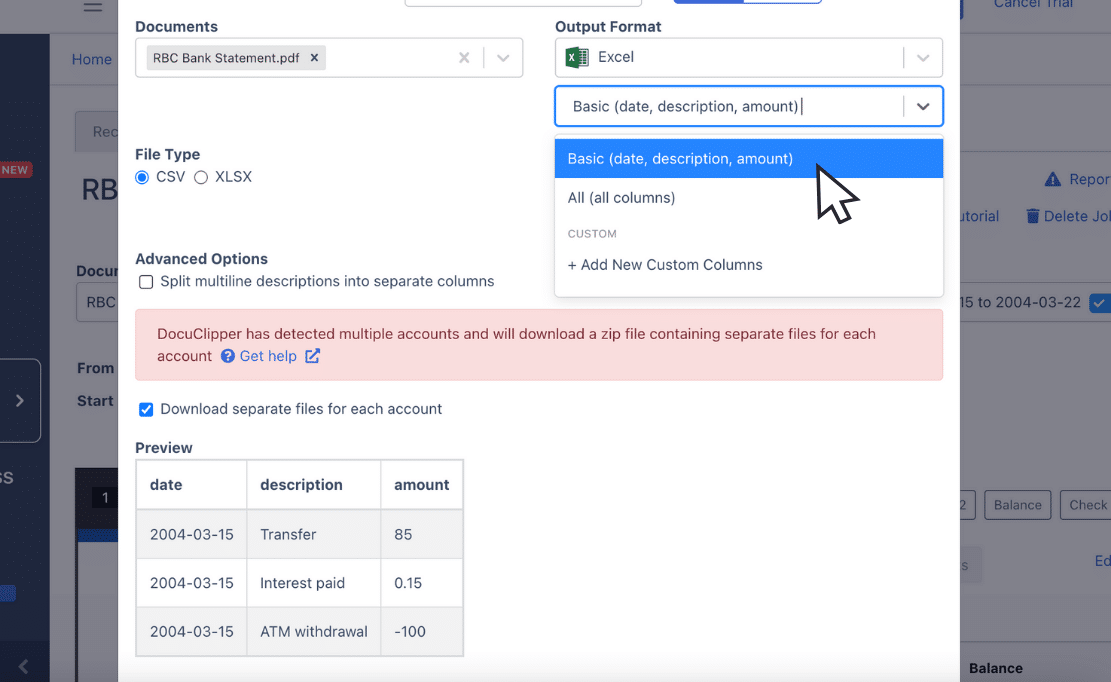
DocuClipper’s default layout can be modified by selecting “Customization,” allowing you to create a personalized setup that aligns with your accounting needs.
How to Download RBC Bank Statements
To download your electronic statements (eStatements) using the RBC Mobile app, follow these steps:
- Open the RBC Mobile App and sign in.
- For iOS, tap “More,” or select “Menu” on Android.
- Tap “Statements” and choose the account you wish to view.
- Your most recent six statements will display by default. Use the dropdown menu to select other statement periods if needed.
Alternatively, from the Accounts Summary page, tap “Statements/Documents” in the upper-right corner. On the Account Documents page, follow the prompts to download and view documents for bank accounts, credit cards, investments, loans, mortgages, or tax-related documents.
Note that only accounts set up for electronic statements will be accessible. If a specific eStatement is unavailable, you may not be enrolled for eStatements.
Final Advice
Many banks provide statements only in formats like bank feeds or CSV, leaving accountants to often manage PDFs. As these PDFs accumulate, processing bank statements can become overwhelming.
DocuClipper streamline this process by transforming PDFs into practical formats like Excel, CSV, or QBO—saving time, reducing errors, and boosting productivity.
Automating these conversions frees up time for higher-priority accounting tasks, enhancing efficiency and lowering operational costs.
Why Use DocuClipper to Convert RBC Bank Statements
DocuClipper is a web-based tool that efficiently converts PDF bank statements into formats like XLS, CSV, and QBO. Utilizing advanced OCR technology, it accurately extracts data fields from bank statements, minimizing manual entry errors.
Seamless integration with popular accounting software such as QuickBooks, Sage, and Xero ensures smooth data transfer and management.
Additionally, DocuClipper’s transaction categorization feature organizes transactions into groups, streamlining financial analysis. Beyond bank statements, DocuClipper also processes credit card statements, brokerage statements, receipts, and invoices, making it a versatile solution for comprehensive financial document management.
FAQs about RBC Bank Statement to Excel
Here are some frequently asked questions about converting RBC Bank statements to excel.
Can I export my RBC bank statement to Excel?
Yes, using a tool like DocuClipper, you can convert your RBC bank statement to Excel. RBC typically provides statements in PDF or CSV formats, and a converter transforms these into organized Excel files, making data management and analysis easier for your accounting tasks.
How do I download a RBC bank statement to a CSV file?
Log in to RBC Online Banking, go to “Transaction History” or “Account Activity,” select your date range, and click “Download” or “Export.” Choose “CSV” as the format, then save the file to your device. Note: RBC offers CSV downloads for up to 180 days.
How do I export an RBC bank statement to Excel?
To export an RBC statement to Excel, download the statement as a PDF from RBC Online Banking. Then, use a tool like DocuClipper to convert the PDF to an Excel format, enabling easy data management and organization for accounting tasks.
Source
Learn More
Looking for more types of bank statements to convert? Check out our library about bank statement conversion:
- How to Convert BoA Bank Statement to Excel, CSV, and QBO in 1 Minute or Less
- How to Convert Wells Fargo Bank Statement to Excel, CSV, and QBO in 1 Minute or Less
- How to Convert Citibank Bank Statement to Excel, CSV, and QBO in 1 Minute or Less
Or use these resources to learn more about accounting:
